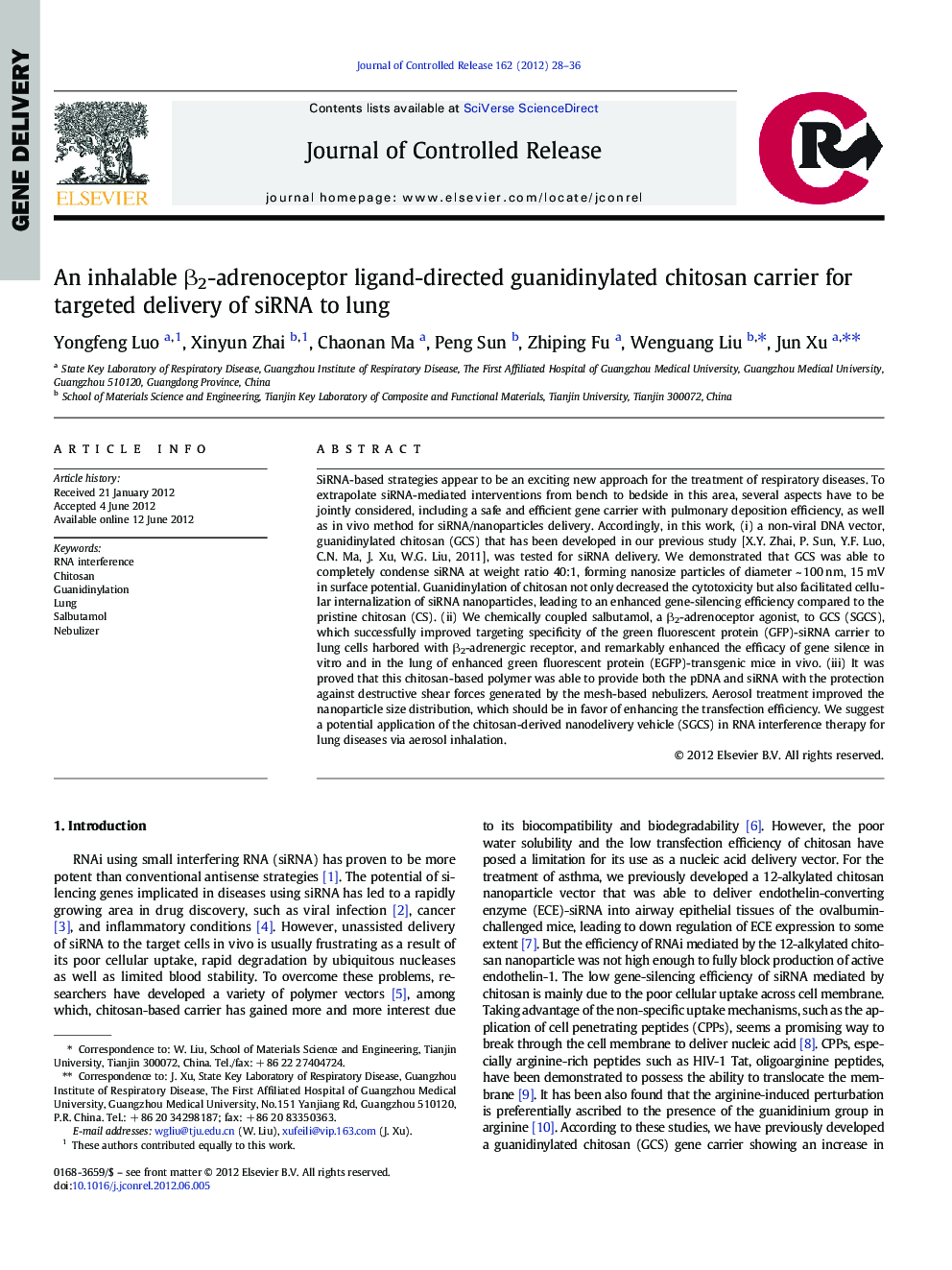| Article ID | Journal | Published Year | Pages | File Type |
|---|---|---|---|---|
| 1424585 | Journal of Controlled Release | 2012 | 9 Pages |
SiRNA-based strategies appear to be an exciting new approach for the treatment of respiratory diseases. To extrapolate siRNA-mediated interventions from bench to bedside in this area, several aspects have to be jointly considered, including a safe and efficient gene carrier with pulmonary deposition efficiency, as well as in vivo method for siRNA/nanoparticles delivery. Accordingly, in this work, (i) a non-viral DNA vector, guanidinylated chitosan (GCS) that has been developed in our previous study [X.Y. Zhai, P. Sun, Y.F. Luo, C.N. Ma, J. Xu, W.G. Liu, 2011], was tested for siRNA delivery. We demonstrated that GCS was able to completely condense siRNA at weight ratio 40:1, forming nanosize particles of diameter ~ 100 nm, 15 mV in surface potential. Guanidinylation of chitosan not only decreased the cytotoxicity but also facilitated cellular internalization of siRNA nanoparticles, leading to an enhanced gene-silencing efficiency compared to the pristine chitosan (CS). (ii) We chemically coupled salbutamol, a β2-adrenoceptor agonist, to GCS (SGCS), which successfully improved targeting specificity of the green fluorescent protein (GFP)-siRNA carrier to lung cells harbored with β2-adrenergic receptor, and remarkably enhanced the efficacy of gene silence in vitro and in the lung of enhanced green fluorescent protein (EGFP)-transgenic mice in vivo. (iii) It was proved that this chitosan-based polymer was able to provide both the pDNA and siRNA with the protection against destructive shear forces generated by the mesh-based nebulizers. Aerosol treatment improved the nanoparticle size distribution, which should be in favor of enhancing the transfection efficiency. We suggest a potential application of the chitosan-derived nanodelivery vehicle (SGCS) in RNA interference therapy for lung diseases via aerosol inhalation.
Graphical abstractFigure optionsDownload full-size imageDownload high-quality image (304 K)Download as PowerPoint slide
